ISIS (also known as ISIL, IS, or Daesh depending on who you ask) has recently popped up in all corners of the globe, not being contained in the territory it physically controls in Iraq and Syria. Its goal is to create a Caliphate, or khilafa, an Islamic state which holds religious authority over the entire global Islamic community, or the ummah. History has seen many such states since the start of Islam, each with their own different peculiarities depending on the historical and geopolitical context of the time. ISIS’s propaganda wing has gone in multiple directions, which range from portraying itself as an unstoppable force that must be feared to attempting to convince the ummah it is their obligation to make hijrah, or (in the ISIS context) a pilgrimage to the new self-proclaimed caliphate. All this has resulted in an influx of Muslims from around the world to the new Islamic State.
The beginning of the modern mujahedeen movement started when the Soviet Union and pro-USSR Afghanistan government were fighting against an Islamic insurgency from 1979 to 1989. Texas Congressman Charlie Wilson proposed helping the mujahedeen forces fight against the USSR, inspired directly by the foreign fighters in historical Battle of the Alamo. He spearheaded US support to the mujahedeen and covert US involvement in the Afghanistan conflict. The US provided assistance to leaders such as Abdullah Yusuf Azzam, who is known as the Father of the Global Jihad movement. Long before the US was fighting against this movement, Azzam toured the US selling “Help Free Afghanistan” T-shirts and held at least one bake sale in order to raise funds for the mujahedeen.
25 years ago, Azzam preached similar ideology to what ISIS does now. For Azzam, it was a fight against the godless communists who would impose their rule on Muslims in Afghanistan, and now ISIS is now preaching the same against the secular Syrian and Shia Iraqi regimes. Azzam’s appeals brought in never before seen waves of foreigners to help the mujahedeen fight. This also led to the construction of the wide networks and tactics that were to be used for years, in which Islamic NGOs and charities such as the Mu’assasat Al-Haramain al Khayriyya (Charitable Establishment of the Two Holy Mosques) were used as a front to help smuggle fighters and fund the fighting.
Mujahedeen in Afghanistan

After the conflict was over and the mujahedeen emerged victorious, Osama Bin Laden decided to continue the fight through creating a team of experienced fighters that would bring the mujahedeen to wherever Muslims were being attacked, using the newly formed Al Qaeda. Using the networks that had been established, Al Qaeda decided that the new battleground for its fight would be in Bosnia, whose conflict started within weeks of the fall of the Communist regime in Afghanistan. Not only did they have thousands of trained fighters looking to fight for the ummah, but this conflict also perfectly fit the frame that they had been using before; a Muslim population under attack from a communist regime. Other immediate areas of interest for the mujahedeen included Chechnya and the Philippines, but this article will focus on those that went off to fight in the Balkans.
The first wave of fighters in early 1992 was largely ineffective. They were idealists, looking to help a population under attack. The second wave, which came only months later, consisted of veterans of the Afghanistan conflict. They formed the El Mudžahid battalion where they provided much needed assistance to the newly established Bosnian state against the stronger forces of Yugoslavia, and Croatia. The mujahedeen’s guerilla experience also proved particularly valuable because of the stronger forces aligned against the Bosnians.
Though in theory the mujahedeen were subordinate to the Bosnian army, the mujahedeen often took orders directly from their own religious authorities, some of which even expressed desire to start a caliphate in Bosnia instead of fighting for a Bosnian state.
While the mujahedeen in Bosnia were effective and did greatly help the Bosnian armed forces, they also caused problems. They saw themselves as warriors of god, not warriors of Bosnia, and so they clashed with the locals. For example, they did not approve of the fact that Bosniaks drank alcohol and danced. Though in theory the mujahedeen were subordinate to the Bosnian army, the mujahedeen often took orders directly from their own religious authorities, some of which even expressed desire of starting a caliphate in Bosnia instead of fighting for a Bosnian state.
Interestingly enough, this conflict brought in foreign fighters from all over the world. Because of its history, it can be seen as a ‘clash of civilizations’. The Ottoman legacy in Bosnia brought in Islamic fighters, while the Catholic Austro-Hungarian legacy brought in fighters from Catholic and Protestant nations alike, and Eastern Orthodoxy in Serbia brought in volunteers from other Orthodox states, most notably Russia. This has replayed itself in the makeup of foreign fighters in Ukraine, with a similar Christian East/West split in foreign fighters. Serbians have gone to fight with the pro-Russian forces (some of which have cited previous support during the Yugoslav wars as a motivation) and Croatians have fought with the Ukrainian government. It should be noted that this was not the first experience the Balkans had with foreign fighters. During the Greek war of independence, many European intellectuals came to help the Greeks, most notably the British poet Lord Byron. Later on during the Spanish Civil War, the Dimitrov Battalion and Đaković Battalion took in many Balkan leftists as an effort to organize Internationalists by origins.
After the Bosnian war ended, the Dayton agreement required the removal of the Mujahedeen. However, many stayed, received citizenship, and married local women. After 9/11, there have been attempts to deport them from Bosnia as an attempt to remove a potential European base for terrorism, which were largely successful.
After the Bosnian conflict, many mujahedeen went to Kosovo, where the Kosovo Liberation Army had been fighting against Yugoslavia for years. The Al Qaeda tactic of exploiting conflicts with Muslim actors led them to entering Kosovo before the fighting was significant enough to draw international attention. Following this, the mujahedeen were able to go into Macedonia where they assisted the National Liberation Army along with other Albanians living both in Macedonia and from the region.
The foreign fighter phenomenon in the Kosovo and Macedonia conflicts have been poorly recorded compared to other conflicts. Much like in Bosnia and Afghanistan before it, the mujahedeen often clashed with locals over religious issues. Like in Bosnia, the local fighters of Kosovo and Macedonia were all interested in ethnic liberation, not the ideology of fundamental Islam that the mujahedeen came to fight for. Many of the fighters stayed after the conflicts were over, while others left to further their dream of global Islamic conquest. Shortly after the end of the Macedonian conflict, the September 11th attacks occurred, which created a split in the mujahedeen in which many Western fighters had to decide their allegiances.
During pre-September 11th conflicts, there were American and European Muslims who fought with the mujahedeen and returned home without seeing a contradiction with their two identities. When discussed in Jihadist ideology, this is because it is considered honorable to defend Muslims under attack in traditional Islamic lands, while there is questionable legitimacy over attacking non-Muslims in foreign lands. Many moderate Jihadist groups are focused on defending Muslims, while many of the more radical groups don’t agree with attacking non-Muslims in faraway lands.
The end of conflicts in the region did not end the influx of radical Islam into the region. The instability left in the region after all of these conflicts has made it easy prey for Islamic groups and humanitarian agencies with alternative motives. Even though the Muslim population in the region has been traditionally moderate, rich Salafi groups such as the ‘Saudi Joint Relief Committee for Kosovo and Chechnya’ that shares the ideology of groups such as Al Qaeda have funded mosques and madrasas (Islamic schools) in the region, many of which have been built illegally. One such example is the Society of the Revival of Islamic Heritage, which the U.S. Department of the Treasury designated as “providing financial and material support to Al Qaeda and Al Qaeda affiliates” and had been acting in Kosovo for years before it was outed as a terrorist funding organization. For a detailed article on the Salafi influence on the Balkans, see “Radical route – Salafism in the Balkans” by Dimal Basha and Dr. Jana Arsovska.
Occasional incidents bring up the painful past. In 2002, seven men were killed in Macedonia following a gun battle with police. The men, all Pakistani, were accused of being part of the NLA and mujahedeen who were planning on attacking embassies around the country. However, this narrative was heavily questioned, and some members of the government said that it was a staged shooting to make Macedonia look like a victim in the eyes of the international community. Similar counter-narratives have been heard in this year’s gun battle in Kumanovo (which consisted of Kosovar Albanians rather than Macedonian Albanians) such as the attacks being part of a government attempt to distract the country from the current political crisis, or an attempt to punish Macedonia for opposing sanctions against Russian, a theory championed by Russians such as Sergey Lavrov.
With the history of the region in mind, it is not unlikely that such incidents are simply as they appear to be. Throughout history, many armed groups have stayed together after the conflict they fought in ended. Even if an armed group dissolves, the networks and individuals with experience remain. Especially when it comes to a group such as ISIS which is the culmination of years of a violent movement, these networks and histories can have a major effect on how the conflict plays out and how relevant actors react. Such networks allow for everything from recruitment (communication with former mujahedeen is one of the most effective recruiting tools for foreign fighter movements), to hideouts, to access for smugglers or those in transit. These networks have led to the creation of training camps, which have been found in both Albania and Bosnia.
The Balkans’ unique history as one of the only two regions of Europe to have been under Islamic rule (under the Ottoman Caliphate) directly relates to the ideology of ISIS, which is trying to establish itself as a modern caliphate. Five centuries of Ottoman rule over the region resulted in mass religious conversions, most notably in the Bosnian and Albanian populations, but also in the Roma population and in small minorities of Christian populations, such as in Serbia and Bulgaria. Rough estimates give a total of nine million Muslims throughout the Balkans, which is a small percentage of the global Muslim population, but still cannot be ignored by ISIS if it wants to be perceived as the voice of the ummah.
 In a map that became popular on ISIS media accounts, the Balkans fit under the so-called Orobpa governorate that stretches from parts of Austria to Crimea. This territory stretches further into Europe than any historical claim to Muslim lands would enable it to, but ISIS has a tendency of dreaming big. The source of the map is impossible to track down due to the nature of social media. However, even if it did not come from the ISIS war room itself, its popularity among prominent ISIS supporters on Twitter means that it should not be overlooked. If nothing else, it is an insight into the ideology and far-reaching goals of ISIS supporters
In a map that became popular on ISIS media accounts, the Balkans fit under the so-called Orobpa governorate that stretches from parts of Austria to Crimea. This territory stretches further into Europe than any historical claim to Muslim lands would enable it to, but ISIS has a tendency of dreaming big. The source of the map is impossible to track down due to the nature of social media. However, even if it did not come from the ISIS war room itself, its popularity among prominent ISIS supporters on Twitter means that it should not be overlooked. If nothing else, it is an insight into the ideology and far-reaching goals of ISIS supporters
In early June, 2015 ISIS put out its first video specifically geared towards Muslims in the Balkans. Titled “Honor is in Jihād: A Message to the People of the Balkans”, it has that high quality production value that has come to be expected of ISIS, which is assumed to be the result of Western media specialists that have emigrated to join its cause. The introduction of the video takes a glorifying look at the Balkans, both as a geographical region and as a territory that falls under ISIS’s greater vision. “It is a land characterized by the might of mountains that have for centuries been buffeted with fierce battles. Now it has humbled itself to become the new frontier for the Muslims.” Throughout the video, various Bosnian and Albanian mujahedeen make appeals for jihad to their kin in their native languages. They call on others to perform hijrah to ISIS, or to attack the kuffar (offensive term for non-Muslims) in their countries, by any means such as poison or explosives.
ISIS also gives its interpretation of the history of the Balkans, which is that shortly after Islam took control of the region “darkness marched its way back and the Balkans were transformed from an offensive frontier into a defensive one”. They then speak on the creation of nation states over Muslim lands, specifically ruled by atheist communism within the Balkans, which created a “lifeless air” that will only be removed by “the coming winds of jihad.” The narrator constantly derides the traditional secular nature of the Balkan states and interprets the weakness of Islam in the region as the result of manipulation of the ummah that had been tricked into democracy by “the church of secularism, the UN.”

Bringing up the breakup of Yugoslavia, one fighter explains how the UN embargo was an attempt to kill all the Muslims as it was implemented when the Christians already had weapons and the Muslims did not. This, of course, oversimplifies the situation, but it also shows the narrow interpretation of Islam versus the world that ISIS and its supporters preach. Another Jihadist directly blames the secular Bosnian government for the massacres that occurred and for betraying the mujahedeen that came to fight in the war. It then calls on Muslims to depose the secular states and take over the region. The video gives conflicting messages, both calling on lone wolf attacks in the Balkans and calling for hijrah. Both fit into ISIS’s greater goals.
Much like anywhere else in the world, ISIS’ calls for lone wolf attacks present a clear danger. Nerdin Ibrić, who perpetrated the shooting at the Zvornik police station in Republika Srpska within Bosnia and Herzegovina in April, 2015 had ties to a veteran returned from Syria. ISIS supporters could use ethnic tension to attempt to provoke repeats of previous ethnic violence, such as the 2004 Kosovo riots or the 2014 Plovdiv mosque attack in Bulgaria. The history of the region could provide a provocateur with plenty of easy opportunities with potential disastrous results. However, something like foreign fighters coming in to Bulgaria to defend the small group of Muslims over a mosque attack in Plovdiv is probably never going to happen, as it is not the end goal for ISIS. This is especially so now that ISIS is having trouble in its home turf where it has recently lost vital ground and the few fighters that it has exported have been mostly assigned to train groups that have pledged allegiance to ISIS and are actively engaged in conflict, which there are none of in the Balkans.
The risk of a lone wolf attack is very real. A repeat of ethnic or religious violence is an extreme scenario, but one that would have devastating effects on the region, from violent destruction to a simple decline in tourism or foreign investments because of the perceived volatility of the region. Even minor acts of violence that are likely to end in only individual deaths and the maintenance of the status quo could lead to an increase in state repression as a justification to prevent further attacks. This could then be spun by extremists as another attack on their community. Any violence relating to the vaguest of religious tensions and divisions only feeds the ideology that ISIS is trying so hard to promote. Therefore, the possibility of such an attack should not be ignored. Jihadist-inspired domestic attacks have been increasingly common, such as the Sydney cafe hostage situation and the Charlie Hebdo attack in Paris. However, it should be noted that there is a fine line between fear mongering and being aware that ISIS poses a clear and present danger in certain countries.
However, it should be noted that there is a fine line between fear mongering and being aware that ISIS poses a clear and palpable danger to certain countries.
Countries have attempted to use legislation to prevent the flight of jihadists, but this practice comes with its own complications. The UN Security Council passed Resolution 2178 in September, 2014 which called on countries to do exactly that. In response, Bosnia, Kosovo, Macedonia, Montenegro, and Serbia passed laws criminalizing participation in any foreign armed forces. Albania has proposed a similar law, while Bulgaria criminalized membership in terrorist organizations. For a detailed list of such laws, see the Treatment of Foreign Fighters in Selected Jurisdictions: Country Surveys . While this is a step in the right direction, it has certain complications in regards to the foreign fighters themselves. Those that left knowing the laws might take them into account when deciding to go and fight, but those that are already fighting and may wish to return are faced with the threat of multiple years in prison. They may choose to continue to fight even if they are disillusioned with ISIS and wish to leave the group, which has occurred. This is more likely to result in preventing fighters from returning, rather than its stated purpose of preventing them from leaving. Also, many countries have failed to properly keep track of returned foreign fighters, so the enforcement of these laws is not very effective.
Many analysts have looked at how many fighters are coming into the Syrian conflict (meaning to join ISIS as well as groups like Al Nusra, though ISIS is the main importer of fighters) per total population of exporting countries. This ignores the fact that ISIS is not appealing to the whole of the world but to a particular group that is the whole of some countries while a single digit percentage in others. Looking at country populations as a whole does not enable us to look at which Muslim populations are more susceptible for recruitment than others because it distorts the figures of those populations which are actually being targeted by ISIS. For example, if one compares the 1,859,203 population and 125 foreign fighters of Kosovo to the 62,814,233 population and 1,200 foreign fighters of France, it would show that 0.0067% of Kosovars and only 0.0019% of French people have gone to ISIS. Such statistics have led to inaccurate reports of the Balkans being high exporters of foreign fighters per total population: “When looking at these figures on a per capita basis, Kosovo has 125 foreign fighters for every 1 million citizens, making it the highest ranking country among the 22 listed countries. It is followed by Bosnia with 85, Belgium with 42, and Albania with 30 foreign fighters per million citizens”. Looking at the numbers through ‘Foreign Fighters per Muslim Population’ tells a different story. If you adjust the count to only Muslim populations, Kosovo’s number rises slightly to 0.007%. Meanwhile, France’s number jumps to 0.0239%, nearly 800% higher.*
The numbers for “Foreign Fighters per Muslim Population” show a clear trend. The countries that are the highest exporters per Muslim population are highly developed European democracies, with Belgium being the highest at 0.0702%, followed by Ireland (0.0564%), Denmark (0.0561%), Norway (0.0507%), and Austria (0.0362%) all in the top 5. Only 5 of the top 20 exporters have native Muslim populations (Bosnia and Serbia being the two from the Balkans) as opposed to countries like Ireland whose Muslim population consists mostly of immigrants. On the opposite end of the spectrum are the majority Muslim countries with their own radical Islamic movements that provide domestic opportunities for fighters (such as Afghanistan and Pakistan) which export very few foreign fighters out of their total Muslim population. This suggests that those who wish to go and fight are more likely to do so in their home country. Serbia leads the Balkan exporters with 0.0268% while Bosnia is at 0.0213%. Albania is at 0.0053% and Macedonia is at 0.0017%. The former analysis paints a picture of the Balkans as a radical Islamic community in Europe, while the analysis that takes into account Muslim populations show the Balkan people to be what they have traditionally been, moderates.
The Balkans play an important role for ISIS, which sees them as a buffer and a future battleground. The region already has established networks that can be used to transfer people and to raise support for ISIS. For this reason, the Balkans have been targeted specifically by ISIS propaganda, which threatens significant danger for the region. Governments in the regions should be wary of lone wolf attacks but it seems clear that ISIS’ ideology does not have widespread traction among the peoples of the Balkans when compared to other Muslim populations.
*Note on methodology. For the Muslim population of each country, numbers were taken from the CIA Factbook. For the number of foreign fighters the International Centre for the Study of Radicalisation’s most recent numbers report dating from January, 2015 was used. The ICRS has been one of the most reliable sources for counting the foreign fighters, which resulted in them being external advisors for the UN Security Council Resolution 2178. While the numbers are half a year old, they are the best to use for two reasons. One, they use the same methodology for each country, so they are more reliable than using individual news reports to note each country’s statistics. Two, they were published at a time when there were over 20,000 foreign fighters and all countries were counted at the same time, which gives us a large sample size to look at and keeps the analysis consistent in its timeframe. When other major organizations release reports with similar numbers or the ICRS releases a new count, it is important to cross check the findings. It is also important to emphasize that these numbers are by no means perfect. Even the ICRS note that recording each fighter is impossible. However, the consistency from using the same source for both statistics is the best way to ensure that the numbers are an accurate representation of foreign fighter trends.

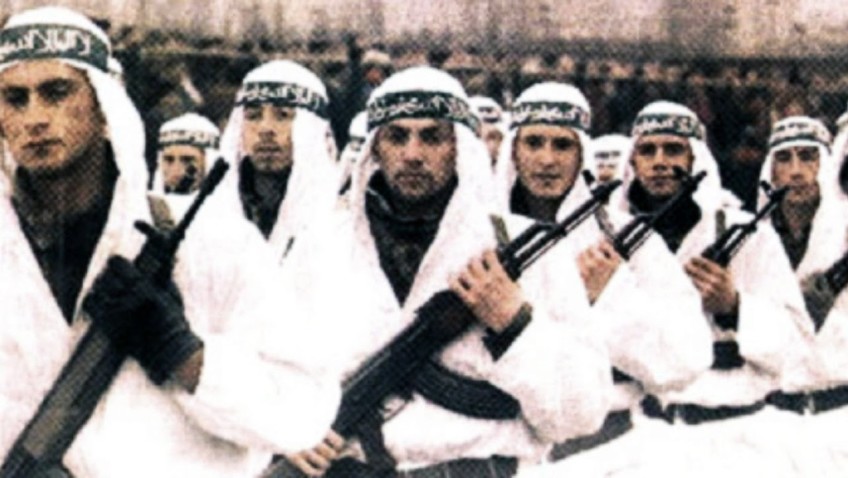

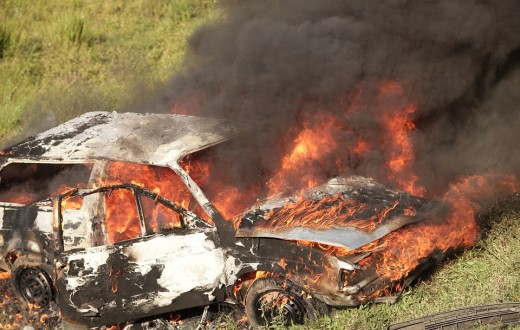

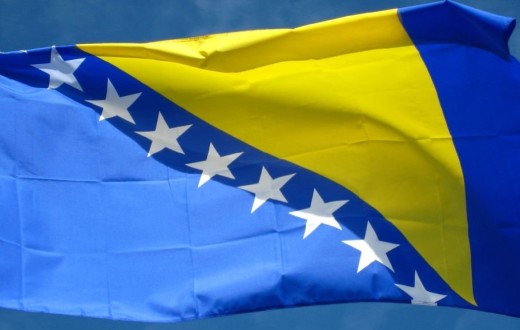

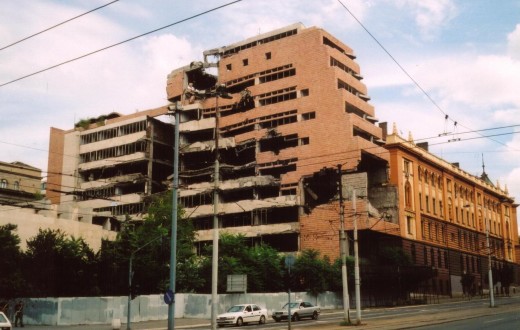
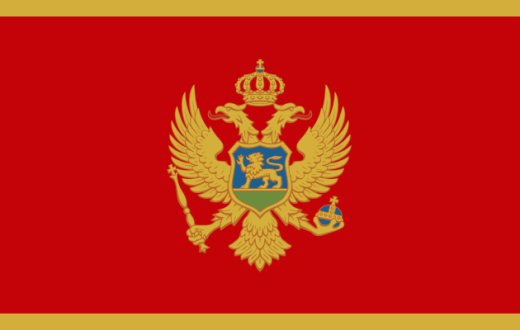
0 comments